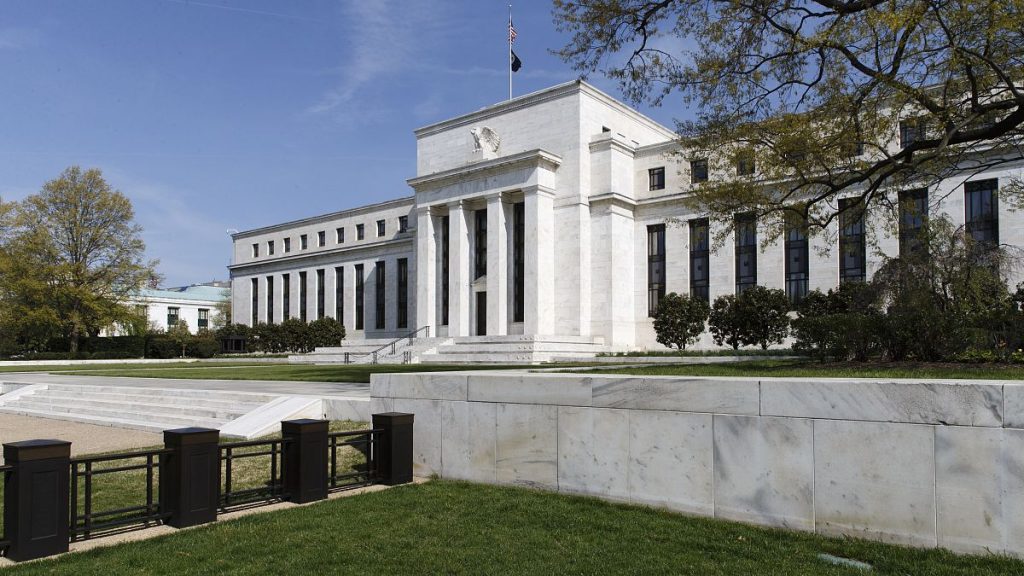The Federal Reserve (Fed) is poised to implement a more gradual approach to interest rate cuts in the coming year, signaling a potential shift in monetary policy. This move suggests that borrowers may experience only modest relief from the prevailing high costs associated with mortgages, auto loans, and credit cards. While the Fed is anticipated to announce a quarter-point reduction to its benchmark rate, bringing it down to approximately 4.3%, this marks a departure from the more aggressive cuts witnessed in recent months. This change in pace suggests a transition towards a new phase in the Fed’s strategy, potentially involving rate adjustments at every other meeting or even less frequently. Policymakers are now projecting two or three rate cuts in 2025, a downward revision from the four cuts previously anticipated.
The Fed’s earlier rate cuts were characterized as a “recalibration” in response to the soaring inflation that reached a four-decade high in 2022. With inflation significantly moderating to 2.3% in October, down from a peak of 7.2% in June 2022, many Fed officials believe the need for exceptionally high interest rates has diminished. However, the persistence of inflation above the Fed’s 2% target, coupled with continued robust economic growth, presents a challenge. Recent retail sales data indicates sustained consumer spending, particularly among higher-income earners, raising concerns that further rate cuts could overstimulate the economy and perpetuate inflationary pressures.
Further complicating the economic outlook is the incoming presidential administration’s proposed policy changes. President-elect Donald Trump’s proposed tax cuts, targeting Social Security benefits, tipped income, and overtime income, alongside deregulation efforts, could fuel economic growth. Simultaneously, proposed tariffs and stricter immigration policies could exert upward pressure on inflation. Fed officials, including Chair Jerome Powell, acknowledge the difficulty in assessing the precise economic impact of these policy proposals until more concrete details emerge and their likelihood of enactment becomes clearer. The uncertainty surrounding the new administration’s policies adds another layer of complexity to the Fed’s decision-making process.
Given these factors, the prospect of significantly lower borrowing costs in the near future appears unlikely. While the average 30-year mortgage rate has retreated from its recent peak of 7.8% in October 2023, it remains elevated at 6.6%. A return to the historically low mortgage rates of around 3%, prevalent for nearly a decade before the pandemic, is not anticipated in the foreseeable future. The Fed’s decision to moderate the pace of rate cuts stems from the belief that the benchmark rate is approaching a “neutral” level, a point at which it neither stimulates nor hinders economic activity.
This cautious approach reflects the Fed’s recognition of the evolving economic landscape. The stronger-than-expected economic growth and slightly higher inflation readings provide the Fed with the leeway to proceed cautiously in its pursuit of the neutral rate. This measured approach allows policymakers to carefully assess the impact of each rate adjustment and fine-tune their strategy as new economic data becomes available. The Fed’s emphasis on achieving and maintaining a neutral rate underscores its commitment to balancing the dual objectives of price stability and sustainable economic growth.
The trend of lowering interest rates is not unique to the United States. Central banks across the globe are also adjusting their monetary policies in response to changing economic conditions. The European Central Bank, for example, recently reduced its key rate for the fourth time this year, reflecting the decline in inflation within the eurozone. This global trend of easing monetary policy highlights the interconnectedness of the world’s economies and the shared challenges faced by central banks in navigating a complex and dynamic economic environment. The Fed’s cautious approach reflects a broader recognition of the need for careful calibration of monetary policy to achieve and maintain a stable and sustainable economic trajectory.














